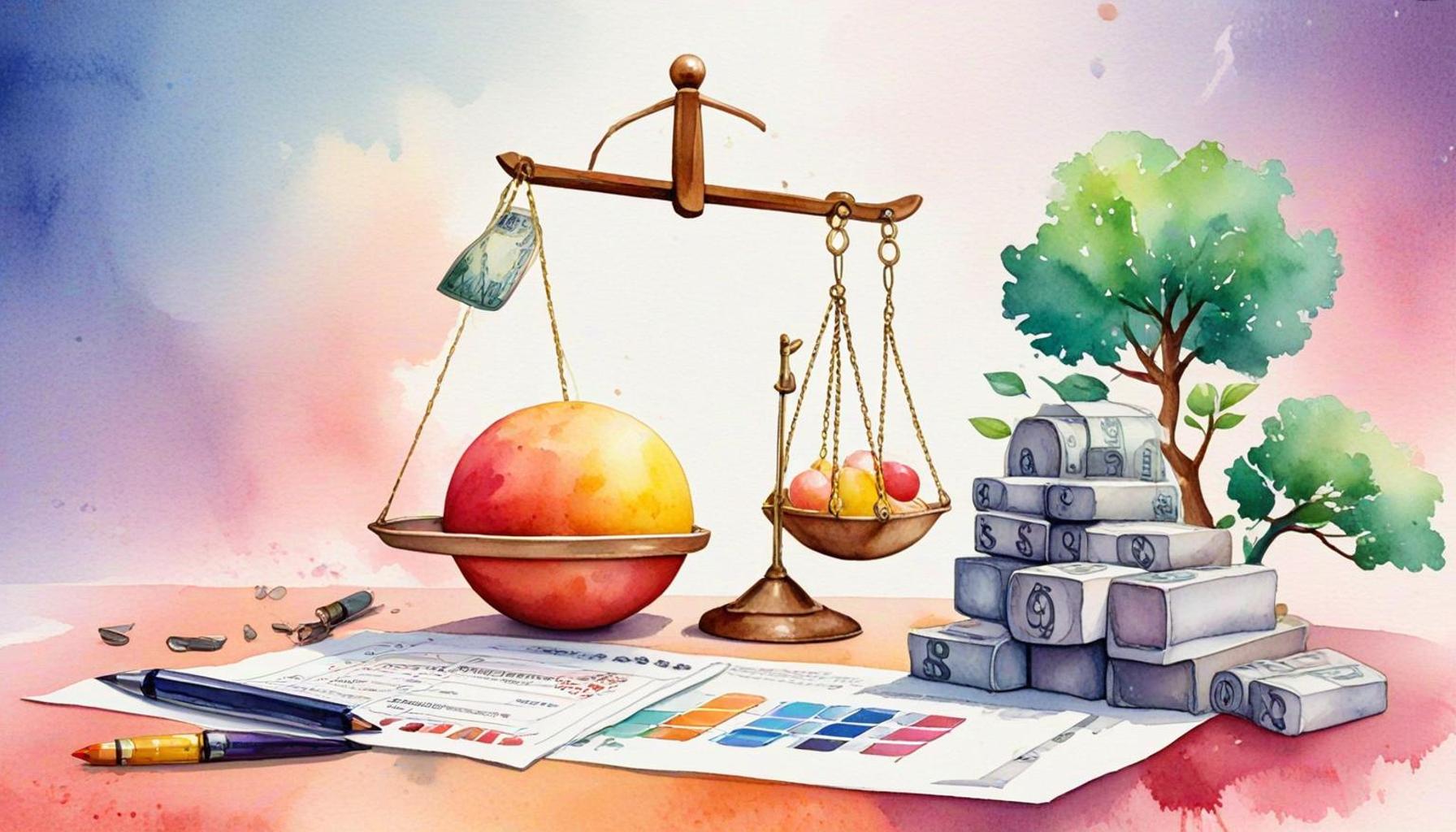How to Balance Debt Repayment and Starting Investments

Understanding Financial Management
Managing your finances effectively is crucial in today’s fast-paced financial landscape. With various financial responsibilities, including debt repayment and the need to start investing, it’s important to strike a balance to secure your financial wellbeing. Taking charge of your finances means being proactive, informed, and strategic.
Debt can quickly accumulate, leaving you feeling strapped for cash. Common forms of debt include:
- Student loans: Many New Zealanders face the burden of educational debt, which can take years to repay. For instance, a recent graduate with a $40,000 student loan may find themselves making monthly payments that limit their ability to save or invest.
- Credit card debt: Credit cards often come with high-interest rates, sometimes exceeding 20%. If not managed properly, this type of debt can spiral out of control, making it more challenging to achieve financial goals.
- Personal loans: These loans, often used for large purchases or emergencies, can also add to your financial obligations, especially if they come with hefty interest rates and short repayment terms.
While it’s essential to tackle these debts, investing plays a vital role in building long-term wealth. Whether it’s through KiwiSaver, the New Zealand stock market, or real estate, starting to invest early can significantly affect your financial future and retirement security. In today’s economic environment, where inflation can erode savings, investing is more crucial than ever.
To manage both debt repayment and investment effectively, consider these key factors:
- Understanding interest rates: The cost of borrowing can significantly impact your financial decisions. For example, while a student loan may have a low-interest rate, credit card debt can become a financial drain if not managed wisely.
- Prioritizing high-interest debts: Focus on paying down debts with the highest interest rates first. If you have credit card debt and a student loan with a lower interest rate, allocate more of your budget to pay off the credit card debt swiftly.
- Identifying investment opportunities: Research various investment avenues to find what aligns with your risk tolerance and financial goals. Investing in a diversified portfolio can help you manage risk while achieving growth.
Finding the right approach to managing your finances involves a thorough evaluation of your current situation and clear prioritization of your resources. By developing a well-structured plan, you can work towards reducing debt while simultaneously investing for your future.
Utilizing the right tools and strategies can ease the burden and help you thrive financially. Consider speaking with a financial advisor for personalized advice tailored to your circumstances, which can lead to more informed decisions about managing debt and investing wisely.
SEE ALSO: Click here to read another article
Finding the Right Balance
To achieve a healthy balance between debt repayment and investing, it’s important to develop a clear understanding of your financial landscape. Start by assessing your current debts, monthly obligations, and potential investment opportunities. This will help you create a sound strategy that allows you to manage both priorities effectively.
Begin with a detailed breakdown of your finances. List all sources of income, recurring expenses, and outstanding debts. This information is vital as it will guide your decision-making process. Understanding your cash flow will empower you to allocate funds appropriately towards debt repayment and investments.
One practical approach is to implement the 50/30/20 rule, which helps you structure your budget effectively. According to this guideline:
- 50% of your income should go towards needs, such as housing, utilities, and minimum debt repayments.
- 30% is allocated for wants, which includes discretionary spending and entertainment.
- 20% is directed towards savings and investments, allowing you to build wealth for the future.
By following this structure, you can ensure that you not only stay on top of your debt obligations but also set aside a portion of your income for future financial growth.
Establishing an Emergency Fund
Before diving into investments, it is wise to establish an emergency fund. This safety net—typically three to six months’ worth of living expenses—will help you manage unexpected financial challenges without derailing your repayment and investment strategies. An emergency fund provides peace of mind, allowing you to focus on tackling debts while being prepared for unforeseen events.
Once your emergency fund is in place, you can prioritize high-interest debts, like credit cards, as previously mentioned. Pay these off aggressively to minimize interest payments that can hinder your financial growth. For instance, if you focus on a credit card debt that has an interest rate of 20%, reducing this debt can save you substantial amounts over time.
As you work towards paying off these debts, remember that investing doesn’t have to be neglected. Even small contributions to investment accounts can help you establish a habit of saving and compounding interest over time. The key is to find a comfortable balance within your budget that allows you to chip away at both your debts and investments simultaneously.
Investing Wisely
When you begin investing, it’s essential to start with options that align with your financial goals and risk tolerance. Consider low-cost investment options like index funds or utilizing a KiwiSaver account, which not only helps you save for retirement but also provides a government contribution that boosts your investment.
Additionally, don’t underestimate the value of educating yourself about the investment landscape. Familiarize yourself with the stock market, read books, or follow reputable financial blogs. The more informed you are, the better decisions you can make regarding the right balance between debt repayment and investing.
Ultimately, creating a personal finance plan that encompasses both strategies will enhance your financial security and path to wealth. By taking into account your unique financial situation and developing a comprehensive plan, you will be better equipped to handle challenges and seize opportunities as they arise.
SEE ALSO: Click here to read another article
Understanding the Role of Interest Rates
One essential factor in balancing debt repayment and investments is to consider the impact of interest rates on your financial health. Different types of debt come with varying interest rates, which can significantly influence your repayment strategy. For instance, student loans and home mortgages typically have lower interest rates compared to credit card debt. Understanding this can help you prioritize your debts effectively.
When calculating the best approach to your finances, focus on paying off higher-interest debts more aggressively. Take a common scenario: imagine you have $10,000 in credit card debt at a 20% annual interest rate, while you also have $10,000 in a student loan at 5%. By allocating more funds towards the high-interest credit card debt first, you can minimize the total amount of interest you will pay over time. This strategy could free up more money for investments once the debt is under control.
Utilizing Debt Repayment Methods
There are various debt repayment strategies you can implement to expedite the pay-off process while maintaining your investment contributions. Two popular methods are the debt snowball and the debt avalanche approaches.
- Debt Snowball: This method focuses on paying off your smallest debts first. This approach can provide psychological boosts as you celebrate paying off debts, potentially keeping you motivated to continue your journey of financial freedom.
- Debt Avalanche: In contrast, this method targets debts with the highest interest rates first. By focusing your efforts here, you can save more money on interest in the long run.
Deciding between these methods will depend on what motivates you most—whether it’s the thrill of quick wins or the financial practicality of saving on interest.
Investments as a Long-Term Strategy
While managing your debts is essential, it’s also crucial to view investments as a long-term commitment. Rather than expecting immediate returns, consider investments like managed funds or New Zealand Exchange (NZX) stocks for gradual growth over time. Investing regularly, even if it’s a small amount like $50 per month, can make a significant difference due to the concept of compound interest. This principle, where earnings on investments generate their growth over time, will work in your favor as you focus both on debt reduction and building your financial future.
Don’t forget to consult with a financial advisor to explore investment options specific to your situation. Many people benefit from professional insights that can help in selecting suitable investment vehicles that align with your financial goals.
Revisiting Your Financial Plan Regularly
Lastly, reviewing your financial plan regularly is crucial. Financial circumstances can change due to unforeseen circumstances like job changes or shifts in the economic environment. Regularly revisiting your strategy allows you to adapt to those changes swiftly. Setting a schedule—such as every six months—to review your debts, budgets, emergencies funds, and investment portfolios can keep you on track. Make it a habit to analyze whether your current repayment plan is effective and if there’s room to increase your investment contributions.
By staying informed about your financial situation and responsive to changes, you will strengthen your ability to balance between debt repayment and investment seamlessly, paving the way to a more secure financial future.
CHECK OUT: Click here to explore more
Conclusion
In conclusion, successfully balancing debt repayment and starting investments requires a thoughtful approach and clear strategies. By understanding the different interest rates associated with your debts, you can prioritize repayments more efficiently. Focus on eliminating high-interest debts first, which will free up additional resources that can be directed toward your investment goals. Employing strategies like the debt snowball or debt avalanche allows you to tackle your debts in a way that aligns with your personal motivation, whether that’s through quick wins or long-term savings.
Viewing investments as a long-term strategy is key. Commit to investing regularly, even small amounts, as this can have a significant compounding effect over time. Remember, it’s essential to stay informed and consider seeking advice from a financial advisor to tailor your investment choices to your specific circumstances.
Lastly, do not underestimate the importance of revisiting your financial plan regularly. Life’s unpredictability may necessitate adjustments to your strategy. By reassessing your debts and investment contributions periodically, you can make informed decisions and maintain a balance that leads to financial stability.
By integrating these practices, you’ll be on your way to a sound financial future, creating a solid foundation that allows for both debt management and wealth accumulation over time.
Related posts:
Step by step to create an effective personal retirement plan
Comparison between traditional and digital credit cards: which one is ideal?
Key Indicators to Measure Your Personal Financial Progress
How to set realistic financial goals for the next 12 months
Proven Methods to Increase Your Monthly Income and Build Wealth
Best practices for using a credit card without compromising your budget

Linda Carter is a writer and financial expert specializing in personal finance and financial planning. With extensive experience helping individuals achieve financial stability and make informed decisions, Linda shares her knowledge on the our platform. Her goal is to empower readers with practical advice and strategies for financial success.